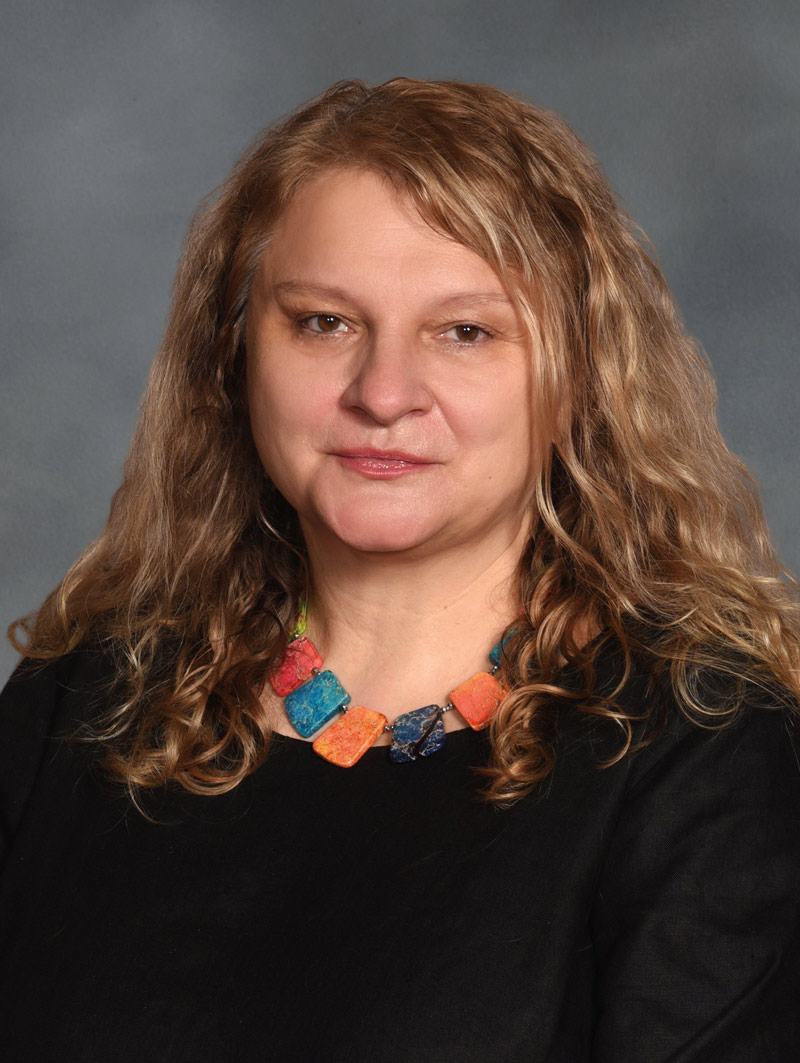
 In 2021, Svetlana Tatic-Lucic, a professor of bioengineering and electrical and computer engineering and former Rossin College associate dean of faculty development, temporarily relocated from the storied halls of Packard Lab to the National Science Foundation’s 19-story headquarters in Alexandria, Virginia. Tatic-Lucic is on leave from Lehigh lending her expertise in micro-electro-mechanical systems (MEMS) in cell biology and neuroscience applications to the federal agency as a rotating program director within the Division of Electrical, Communications and Cyber Systems. She belongs to the Communications, Circuits and Sensing Systems program cluster and manages the interdisciplinary science and engineering research thrust in the area of sensing and biomedical applications of advanced technologies. From her post, Tactic-Lucic has a front-row seat to the ideas, innovations, and fundamental research that will support the next generation of biological sensing systems and neurotechnologies—advances that could revolutionize medicine and healthcare, environmental and biological monitoring, and related fields. “My entire career has prepared me for this role,” she says, “and I feel that I am a very good match for it.”
In 2021, Svetlana Tatic-Lucic, a professor of bioengineering and electrical and computer engineering and former Rossin College associate dean of faculty development, temporarily relocated from the storied halls of Packard Lab to the National Science Foundation’s 19-story headquarters in Alexandria, Virginia. Tatic-Lucic is on leave from Lehigh lending her expertise in micro-electro-mechanical systems (MEMS) in cell biology and neuroscience applications to the federal agency as a rotating program director within the Division of Electrical, Communications and Cyber Systems. She belongs to the Communications, Circuits and Sensing Systems program cluster and manages the interdisciplinary science and engineering research thrust in the area of sensing and biomedical applications of advanced technologies. From her post, Tactic-Lucic has a front-row seat to the ideas, innovations, and fundamental research that will support the next generation of biological sensing systems and neurotechnologies—advances that could revolutionize medicine and healthcare, environmental and biological monitoring, and related fields. “My entire career has prepared me for this role,” she says, “and I feel that I am a very good match for it.”
Q: What are your duties at the NSF?
A: I make recommendations for future awards, manage the portfolio of existing awards, and participate in working groups outlining future solicitations. I also had the privilege of being a lead program officer for the Integrative Strategies for Understanding Neural and Cognitive Systems Program in the past year. It was a challenge and an honor to head this cross-directorate program as a brand-new program director, and I learned a great deal.
Q: How does your research expertise support you in this role?
A: The field of sensors, in general, is very interdisciplinary, because it assumes knowledge and understanding of various branches of engineering, physics, and chemistry. And in my specific field of interest, biology is needed as well. This breadth gives it charm and irresistible allure, at least as far as I am concerned.
 I’ve worked in interdisciplinary research since my first job, and my PhD thesis focused on applications of microdevices in neuroscience. I still remember that my fellow students were amused that I had to be cross-trained in biology. Back in the early 1990s, sessions on sensor applications in biology were poorly attended at major conferences. Many people moved to this field later because of more abundant funding, but I was there from the very beginning of my career.
I’ve worked in interdisciplinary research since my first job, and my PhD thesis focused on applications of microdevices in neuroscience. I still remember that my fellow students were amused that I had to be cross-trained in biology. Back in the early 1990s, sessions on sensor applications in biology were poorly attended at major conferences. Many people moved to this field later because of more abundant funding, but I was there from the very beginning of my career.
Q: How do NSF program officers affect the direction and trajectory of STEM research?
A: Feedback from the review panel plays the biggest role in any funding decision. However, each program director submits a recommendation, based on their insight into the field and what they see as the most promising venues of research, that is considered as part of the evaluation process.
Even more important, we have an opportunity to initiate and shape new solicitations and Dear Colleague Letters, which are special requests for research proposals, often tied to societal needs or unique circumstances like the pandemic. This process was a black box for me prior to joining the NSF, and it has been interesting to peek behind the curtains and get to know the intricacies of the process.
Q: Why is it beneficial for researchers to serve a rotation as a program director?
A: From my first visit to the NSF, which was early in my academic career, I wished to one day work there and make a contribution. I believe it is beneficial for both researchers and their home institutions. This position gives you a big-picture view of where STEM research is going and insight into how you can contribute in your specific field, particularly as it applies to the NSF’s grand challenges. You gain an insider’s perspective into how proposals are processed and learn strategies to maximize the chances of securing NSF funding. When program directors return to their home institutions, they can pass that knowledge along by mentoring other faculty.
Q: Why did you choose this new path?
A: I see this job as a way to round out a full deck of experiences in my career as an engineer and scientist. I’ve worked for an industry giant and a startup. I’ve made my way up the ranks as a professor and served as an administrator. Now I’m working in the government.
I think it is a royal flush of career experiences, and I am proud of my achievements. Not bad for a girl from a small town in a war-ravaged country in Southeastern Europe.
Q: What have you learned about the proposal process, and specifically about the NSF’s focus on convergence research, from sitting at the other side of the table?
A: It is very important that researchers are well-prepared and have an awareness of the opportunities and a wide-ranging network of possible collaborators. Communicating with the potential program director up front, to be sure that proposals are submitted to the right place, is critical. Convergence research is extremely impactful, but conducting research across different disciplines of science and engineering is far from easy. Flexibility is essential.
Q: You have been deeply involved in the Rossin College’s efforts to improve diversity, equity, and inclusion within the academic environment. How can similar goals be supported by funding agencies?
A: The NSF is very focused on making strides in these areas, specifically in regards to broadening participation in STEM. We are attempting to develop and implement innovative strategies to increase the participation of people from backgrounds that are underrepresented in our fields. Other funding agencies have similar efforts, and in concert with what is going on in academia, I hope we will see some tangible results soon.
Interview by Katie Kackenmeister
Main photo courtesy of NSF
